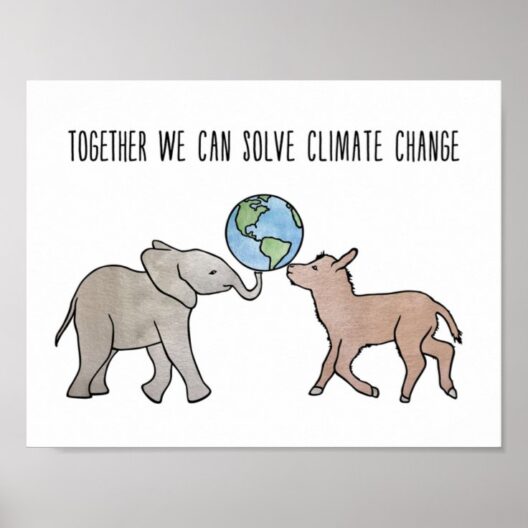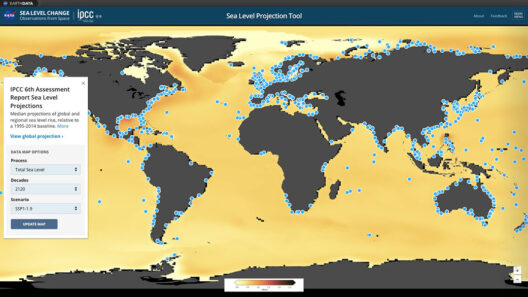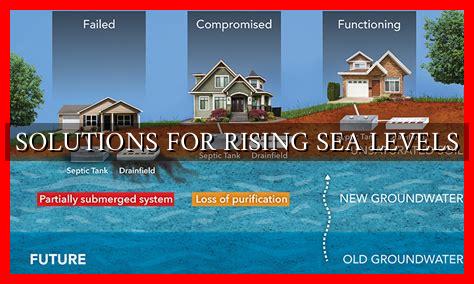The phenomenon of rising sea levels is a pressing global issue that impacts various regions differently. As we delve into this topic, it is essential to understand the hotspots around the world that are particularly affected by the encroachment of seawater. Governments, communities, and organizations are beginning to take notice of this environmental challenge, but more comprehensive action is imperative. The following sections will explore specific regions where rising sea levels pose significant threats, their causes, and potential mitigation strategies.
The causes of rising sea levels are multifaceted, primarily driven by climate change. As global temperatures increase, glaciers and ice caps melt, contributing vast amounts of freshwater to the oceans. Additionally, the thermal expansion of seawater as it warms plays a significant role in rising sea levels. Understanding these factors enables us to identify the most vulnerable coastal regions.
Now let’s explore the areas where the impacts of rising sea levels are most pronounced.
Vulnerable Pacific Islands: The Canary in the Coal Mine
Among the regions facing imminent danger from rising sea levels are the low-lying islands in the South Pacific. Nations like Tuvalu and Kiribati are tangible examples of climate-change impacts that underscore the precarious balance of ecosystems and human habitation. With average elevations often less than two meters above sea level, these islands are almost on the front lines of the ocean’s advance.
In addition to losing land mass, communities struggle with saltwater intrusion into freshwater aquifers—rendering drinking water increasingly scarce. The socio-cultural impacts are profound, affecting traditional ways of life and leading to existential dilemmas about relocation. Here, climate migration becomes not just a concern, but a necessity for survival.
Atlantic Coast of the United States: Rising Tides in Delicate Balances
The Atlantic coast of the United States, from Florida to Maine, serves as another crucial hotspot for rising sea levels. Significant urban hubs such as Miami, New Orleans, and New York City are grappling with heightened risks of flooding, erosion, and more frequent hurricanes intensified by climate change.
Miami, for instance, experiences “sunny-day flooding,” where high tides cause seawater to overflow onto streets, disrupting daily life and damaging infrastructure. The expensive burden of adaptation measures, which include improved drainage systems and elevated buildings, weighs heavily on local governments and residents alike.
As we observe these coastal cities’ challenges, it is also crucial to note the construction of resilient infrastructure. Innovative techniques, such as building seawalls and restoring wetlands, aim to mitigate the effects of rising seawater. These solutions offer a glimpse into how communities can adapt, albeit at a significant financial commitment.
Bangladesh: Battleground for Climate Justice
Bangladesh represents another area severely affected by rising sea levels, with more than 160 million people situated in the delta of the Ganges, Brahmaputra, and Meghna rivers. Regularly faced with flooding and cyclones, the country’s lower-lying regions are particularly susceptible to the impacts of melting glaciers in the Himalayas and the rising Indian Ocean. The result is a continuous cycle of displacement, loss of agricultural land, and worsening poverty.
The impacts in Bangladesh extend beyond land loss; entire livelihoods are at risk as fishing and farming—which form the backbone of local economies—are disrupted. Adaptation strategies, including the development of floating gardens and improved forecasting systems for severe weather, highlight the resilience and innovation emerging from these challenges.
Future Implications of Rising Sea Levels
The implications of rising sea levels extend beyond geographical concerns; they touch economic, social, and political realms. The potential for national and international conflicts over resource scarcity is ever-present. Increasingly, nations may be forced to negotiate territories as critical land evaporates beneath rising waters.
Furthermore, climate refugees are emerging as a new demographic, leading to urgent humanitarian crises in regions, particularly in less developed nations that lack adequate infrastructure and resources to address these changes. Ensuring equitable solutions for those displaced by climate change will require concerted global efforts and a reevaluation of migration policies to accommodate these impending realities.
Innovative Solutions: Where Hope Meets Reality
While the challenges posed by rising sea levels are monumental, innovative solutions abound. Restoration projects, involving the construction of mangroves or the reestablishment of marshlands, provide natural barriers against storm surges while enhancing biodiversity. These projects can offer a dual benefit—preserving essential ecosystems while serving as a buffer against climate impacts.
Moreover, technological advancements in predictive modeling and early warning systems are contributing to enhanced resilience against climate-related events. The integration of these technologies with on-ground community participation can foster a more robust and proactive response to local changes.
In conclusion, the reality of rising sea levels necessitates holistic strategies encompassing environmental, social, and economic dimensions. By shining a light on impacted regions and fostering innovative solutions, the path forward can become clearer. Global cooperation, understanding, and empathy will be paramount in tackling this ubiquitous challenge that increasingly defines the twenty-first century. The risks are significant, but so too are the opportunities for innovation and solidarity among nations in the face of environmental upheaval.







